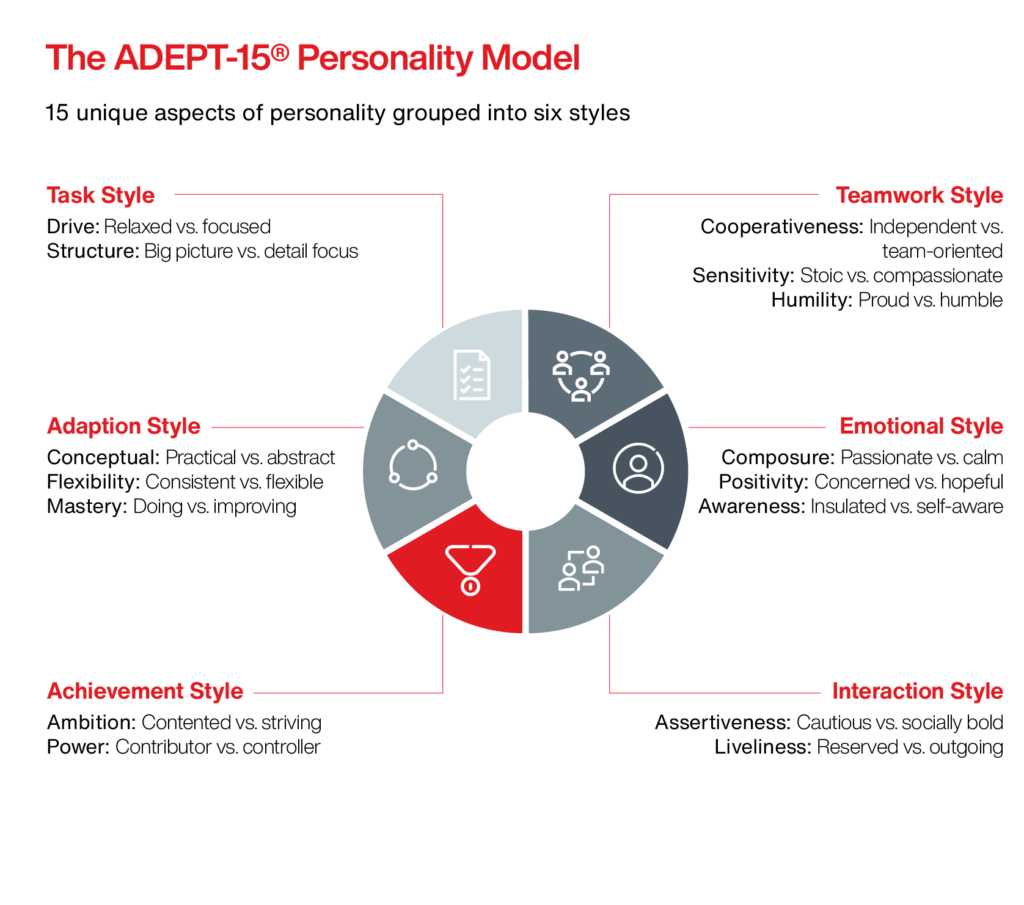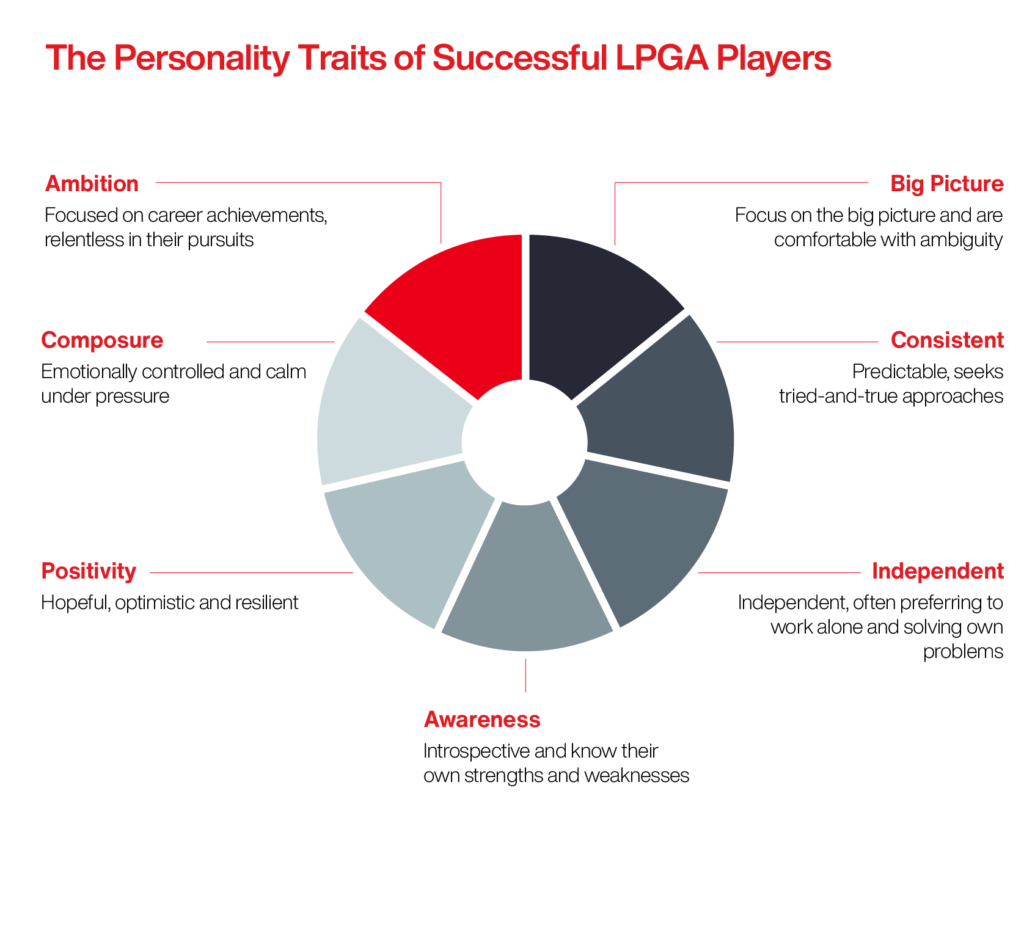Case Study: The LPGA Unlocks Talent Potential with Data
May 3, 2023
The LPGA is using data to assess and support the talent potential of its top players — and companies can do the same.
Key takeaways:
- Data can help athletes and employees accurately identify their strengths and areas for improvement.
- Assessment technology can help draw up personalized plans for talent development.
- Golfers and businesses can use data on personality traits and individual talent potential to build resilience.
Data and analytics are giving organizations new insights into the best ways to find and support talent. Though businesses are increasingly using data and new technology as part of their staffing processes, leaders in other fields are also taking a scientific approach to people solutions. In the world of sports, the Ladies’ Professional Golf Association (LPGA) is now using some of the same technology that employers rely on to identify and develop golfers with high talent potential. Using Aon’s ADEPT-15 personality assessment technology, which is a tool that takes a scientific, trait-led approach to measure the core behaviors required for success across all roles within an organization, the LPGA has created Success Profiles for its top players and used these insights in strategic talent development. In an interview with Aon, Blake Henderson, director of athlete policy and development at the LPGA, shared how data can improve performance and resilience among players.

Why is assessing players’ talent potential important in the LPGA? How has using data led to better decisions on the golf course?
In golf, data is everything! Data drives decision-making for players both on and off the course. Players are constantly searching to find an edge over the competition. An increased emphasis on data-driven decisions has allowed players to make the most of each and every opportunity.
Determining the talent potential of a player can be challenging at times. For new professionals, often the on-course results may not align with the overall potential of the player. New professionals have many obstacles to overcome and have no experience to pull from to combat these new challenges.
The results provided by the ADEPT-15 assessment have allowed our team to see past the on-course results and better understand the true potential of each player. We are also now better equipped to provide information and recommendations to players based on their unique needs. Knowing the true strengths and areas of improvement for each player allows us to provide more accurate recommendations for programs and services to drive performance in specific areas of development. Since the inception of the program, we have seen a direct correlation between player growth off the course and success on the course.
How have the results from this kind of data analysis helped to address specific areas for skill development among LPGA players?
After completing the assessment and reviewing the player report with the athlete development team, the player has a clearer picture of their true strengths and areas of improvement. The player works directly with the athlete development team to craft a personalized action plan. The player is then connected with existing resources within the athlete development department.
The assessment and Success Profile allow the player to easily identify their areas of untapped potential talent. This helps to build resilience among the players. They know there is a viable pathway forward for constant improvement. They now have the knowledge, resources, and action plan to achieve it.
How has using this kind of data changed — or supported — the LPGA’s approach to player performance?
We attempt to add value to each player at every stage of their career. For the first time, we can bring a data-driven approach to better assist our players in the development process. The unique player report provides the opportunity to personalize the development resources for each player.
Engagement is a major factor in athlete development. This process has allowed us to better connect and engage with our players. It creates natural entry points for us to add value to players and point them in the right direction based on their specific needs.
What has using this kind of data revealed about identifying and nurturing the talent potential and personality traits of successful LPGA players early in a golfer’s career?
After extensive research and a case study performed on our Epson Tour players, we’ve been able to understand the characteristics that make successful female professional golfers and LPGA players. These success characteristics are ambition, awareness, big picture thinking, composure, consistency, independence, and positivity.

The research and case study helped to confirm many of our previous assumptions in this space. This has also helped us to reinforce the value of big picture thinking with our players and move from a results-oriented mentality to a process-oriented mentality.
Identifying these traits and knowing where each player stands in the development process for each characteristic has been vitally important. This helps us to remove any prior assumptions and know the true value for each player. We then can work together with the player to develop an athlete development action plan built to serve their unique needs based on objective information derived from a data-driven process. This allows us to assist the player in building a strong foundation for their entire career.
What can businesses learn from the world of golf in terms of the way off-the-course player qualities relate to on-the-course success?
Like we have seen in professional golf, organizations can learn a lot from prioritizing data. Using success characteristics and implementing corresponding off-the-course resources has a direct correlation with the success a player experiences on the course.
An organization should focus on providing assistance and resources to support the whole person, not just the revenue-producing part of the employee. Using a data-driven approach to development will assist the employee in knowing their strengths and areas of improvement but will go much further. The employee will feel a sense of togetherness with the organization and truly know the organization is looking out for her or his best interests. This will lead to increased results from the employee while creating more goodwill towards the organization.
What should leaders in other fields consider when incorporating these kinds of analytics into their performance management and team-building strategies?
As with anything new, people are always hesitant to make changes to the status quo. Organizations may initially experience pushback, especially from more senior employees. However, this will quickly diminish if the organization can appropriately convey the value the employees will receive from incorporating these types of analytics into performance management and team-building strategies.
Implementing these strategies will also allow organizations to better understand employees, how to serve them, and how to more appropriately equip managers to lead.
To find out more about Aon’s insights for human capital solutions, click here.
The post Case Study: The LPGA Unlocks Talent Potential with Data appeared first on The One Brief.